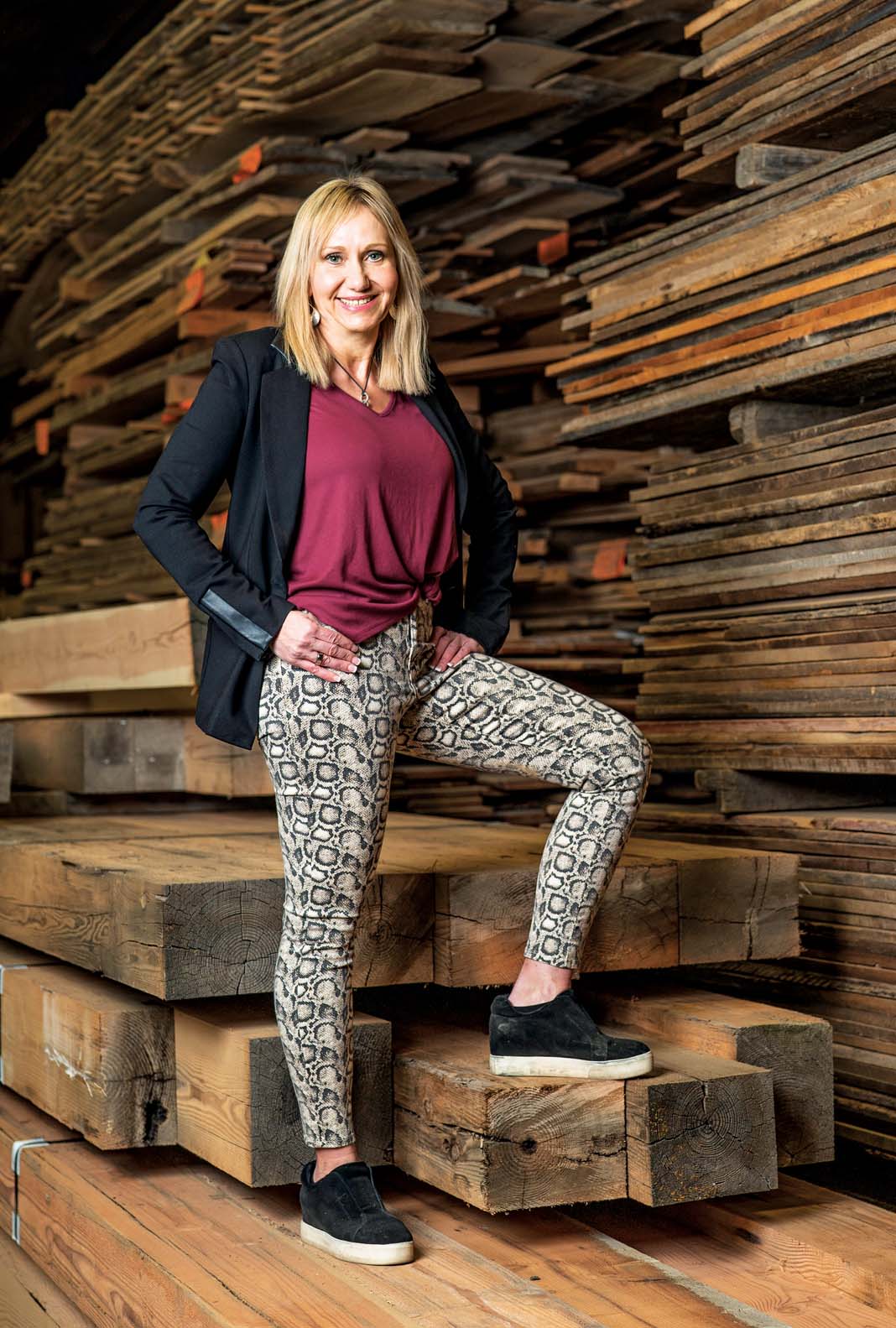Photos by David Ellis
 Growing up in central Wisconsin, Sarah Londerville wanted one thing: to end up in Minneapolis. In the early 1990s, that dream became reality when she accepted a job with Knott’s Camp Snoopy in Mall of America.
Growing up in central Wisconsin, Sarah Londerville wanted one thing: to end up in Minneapolis. In the early 1990s, that dream became reality when she accepted a job with Knott’s Camp Snoopy in Mall of America.
She went on to travel the country as the regional director of retail operations, but when her career began keeping her away from her family for longer than she’d like, Londerville decided it was time for a change. Today, she owns Manomin Resawn Timbers, and spends her days selling reclaimed wood flooring, paneling, mantels, doors, and more.
What attracted you to this line of work?
My dad was a welder and would scrap metal on the side. We were always reclaiming metals, but I didn’t think about how we were actually reusing this material. Then I noticed how reclaimed wood looked unique and different compared to new wood, so I started working with Douglas Fir coming out of old factories and warehouses. I love the history of the material—to me, we’re selling a piece of Americana.
What are the benefits of adding reclaimed wood into your home?
Something that’s cool about reclaimed wood flooring is that it can be installed over in-floor heat or glued directly to concrete floor because our process prevents the wood from moving once installed. New wood would want to move, but wood is actually very stable when it’s reclaimed.

Another aspect is the grain of the wood—the oak is so dense and looks completely different from new oak. It’s difficult to describe unless you look at new and old next to each other. And the texture and patina of the old boards—the cracks—look like art. Every timber is unique, and one barn might have 10 different species of timber in it.
What does the restoration process include?
After receiving timbers from old warehouses or barns, the timbers have to be dried to match the moisture of the subfloor in the client’s home. To do this, the timbers are placed in a kiln, heated, then cooled to bring it back to equilibrium. This heating process also kills any bugs or larvae in the wood.
Next, all the metal needs to be removed from the timbers. We put straight edges on the board, and it may or may not be run through a planer to make its thickness consistent. Then, we remove any defects—we cut out holes and rot to make sure it’s usable.
What’s your favorite type of wood to work with?
There’s part of me that’s partial to Douglas Fir because it’s the first material I worked with and I have a lot in my home. I also really love antique elm. I love the grain in it and the original texture of the board. I love antique oak with sawmill marks, too.

What is your most popular product?
We do a ton of mantels, which is one of our lower-priced items. Flooring, too. People love the character, and right now, there’s a huge trend toward timbers. Dressing up the ceiling is popular right now as well.

Do you have any tips for someone trying to determine what species of wood to use in their project?
I think looking at the style of their home and even what kind of furnishings they have is important. Is it contemporary or traditional? If they’re formal and traditional with white cabinets and white trim, they might want to go with a darker floor that makes the white pop. If you like contemporary and clean, it’s cool to put a natural antique elm in or an antique oak with sawmill marks for an urban loft look.





























